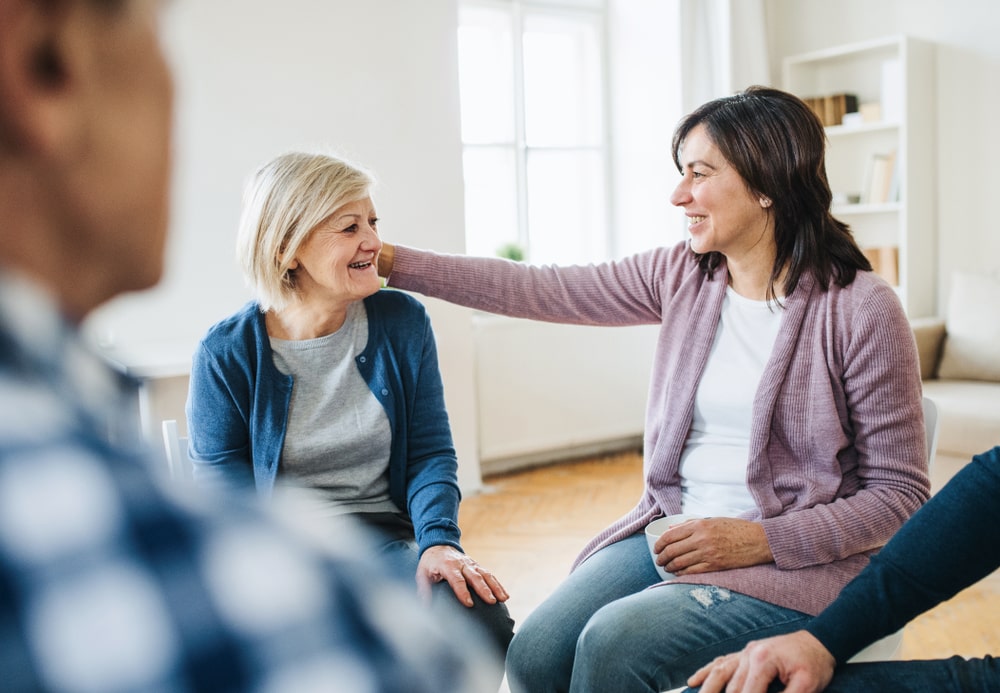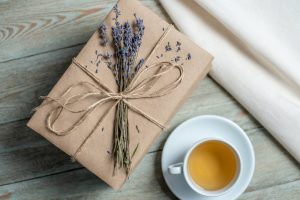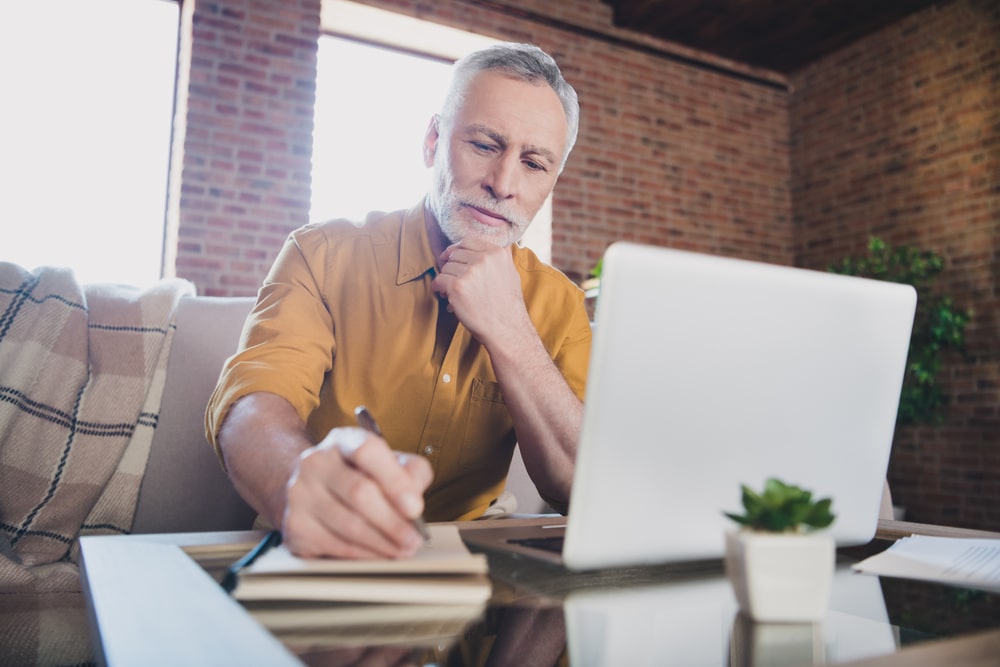
After the death of someone you love, it’s hard to come to grips with your new reality. Figuring out how to move forward, how to do life, without their presence can be both physically exhausting and emotionally overwhelming. If you are struggling with the emotions of grief, then it might be time to consider joining a grief support group.
The idea of joining a grief support group might feel uncomfortable, especially if 1) you’re an introverted person, 2) you’ve never done it before, or 3) you don’t like admitting that you need help. But really, grief support groups come in all shapes and sizes. You can choose a group that focuses on a wide range of grief types or select a group that has a narrower focus (spouse loss, child loss, suicide loss, etc.). This way, you will journey with other people going through a similar type of loss. Also, you can choose a group similar in age to yourself or one that spans generations.
No matter which type of group you choose, there are many benefits to attending a grief support group. Let’s discuss seven of those benefits together.
7 Benefits of Joining a Grief Support Group
By joining a grief support group, you can:
1. Build connections and find a sense of community
Perhaps the biggest benefit to joining a support group is finding a community you can be vulnerable with. Depending on your life and circumstances, it might be hard to open up with friends or family members. With a grief support group, you are all there for the same reason – to process your grief and move toward healing and reconciliation. There’s freedom in opening up to people who don’t inform your everyday life and who are solely interested in helping you heal. And if friendships arise from the group, all the better. You have advocates for your continued grief journey.
2. Realize you’re not alone
By nature, grief can be isolating. We all process loss in different ways, and the voice in your mind tries to convince you that you’re absolutely alone. That you’re the only person dealing with these complicated feelings. When you join a grief support group, it quickly becomes clear that you aren’t alone. Your feelings are legitimate, valid, and normal. But most of all – there are other people who understand what you’ve experienced and are figuring out how to deal with it, too.
3. Positively impact your mental health
In many ways, it’s easier to keep our feelings to ourselves, but that’s often not the best choice for good mental health. Getting things off your chest has a cathartic effect. Being open, sharing what’s going on inside, dealing with your emotions – these are all proven ways to deal with stress and improve mental health. In a recent study, it was determined that grief support groups can even help reduce depressive symptoms after loss.
4. Find hope and foster personal resilience
When you’re in the depths of strong emotions, like sadness or anger, it’s hard to see your way through. It may feel like this is just your new norm, and there’s nothing you can do about it. In a grief support group, you will find people who are at various stages of the grief journey. Interacting with people who are further along the grief journey can instill a sense of hope and inspire your own resilience. There is a better future ahead as you actively work through your feelings of grief.
5. See the reality of the grieving process
If this is the first big loss you’ve suffered, then your own feelings may take you by surprise. Is it normal to feel this way? Should I feel this sad or this angry or this lost? In a grief support group, you see people at various stages of grief. They will showcase a wide range of emotions and help you normalize your own feelings. Grief is up and down, slow and messy, strong today and quiet tomorrow. Some people will share their story freely while others will sit back and only listen. Every person processes differently. No matter where you’re at on the spectrum, it’s okay and it’s normal.
6. Discover a safe space to express yourself
Within a grief support group, there’s a commitment to listen, encourage, and help each other. This sense of commitment and camaraderie creates a unique opportunity to be real. Surrounded by a group of hurting people, you don’t have to hide your own hurt. Instead, you can open up. Create common bonds with the people around you. Express what’s going on in your own heart and mind freely. This is a safe space – a place where you won’t be judged, a place where you can find validation and encouragement.
7. Learn from the wisdom of others
No matter how many times you’ve experienced loss, every death hits different. Because of that, you may feel even more lost as to how to process your feelings. In a grief support group, you have access to a wealth of knowledge and experience. You will hear about coping skills that are new to you. You may learn more about how the mind and the body react to grief. With the valuable insights and tools you learn, you can create daily practices that will help you manage your own grief and move toward healing.
Should I Attend Online or In Person?
Ultimately, the decision between online and in person depends on either your preference or what’s available in your area.
With an online group, you can join from the comfort of your home and choose what level of involvement you want. Plus, an online group would be an excellent option for those who are homebound or have responsibilities that prevent them from attending in person.
With an in-person group, you can still choose your level of involvement, but you also have the option to go deeper. For instance, a few people may want to grab coffee or dinner after a group session. Plus, if you feel a connection to someone’s story, you have the option to catch them after class for a one-on-one conversation. That’s not easily possible with online groups.
Simply weigh the pros and cons. Evaluate your personal circumstances. Then, choose what works best for you.
What if a Grief Support Group Isn’t Right for Me?
While grief support groups help thousands of people every year, it’s not the best fit for everyone, and that’s okay. If you are feeling overwhelmed, discouraged, out of place, or unwanted, try going to one-on-one grief counseling first. After you have a better grip on your own grief, you can then transition to a grief support group your counselor recommends.
Now that you understand the many benefits of grief support groups, it’s time to decide whether or not to visit groups in your area. Contact your local funeral home, a church, a local grief counselor’s office, or go online to familiarize yourself with the grief resources available locally. Then, choose one that best fits your age, location, or type of loss and find the supportive encouragement you need for the grief journey ahead.














































































